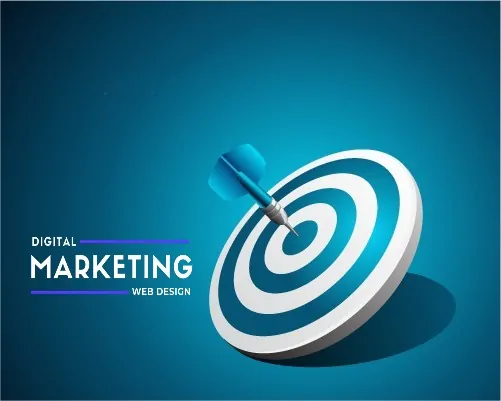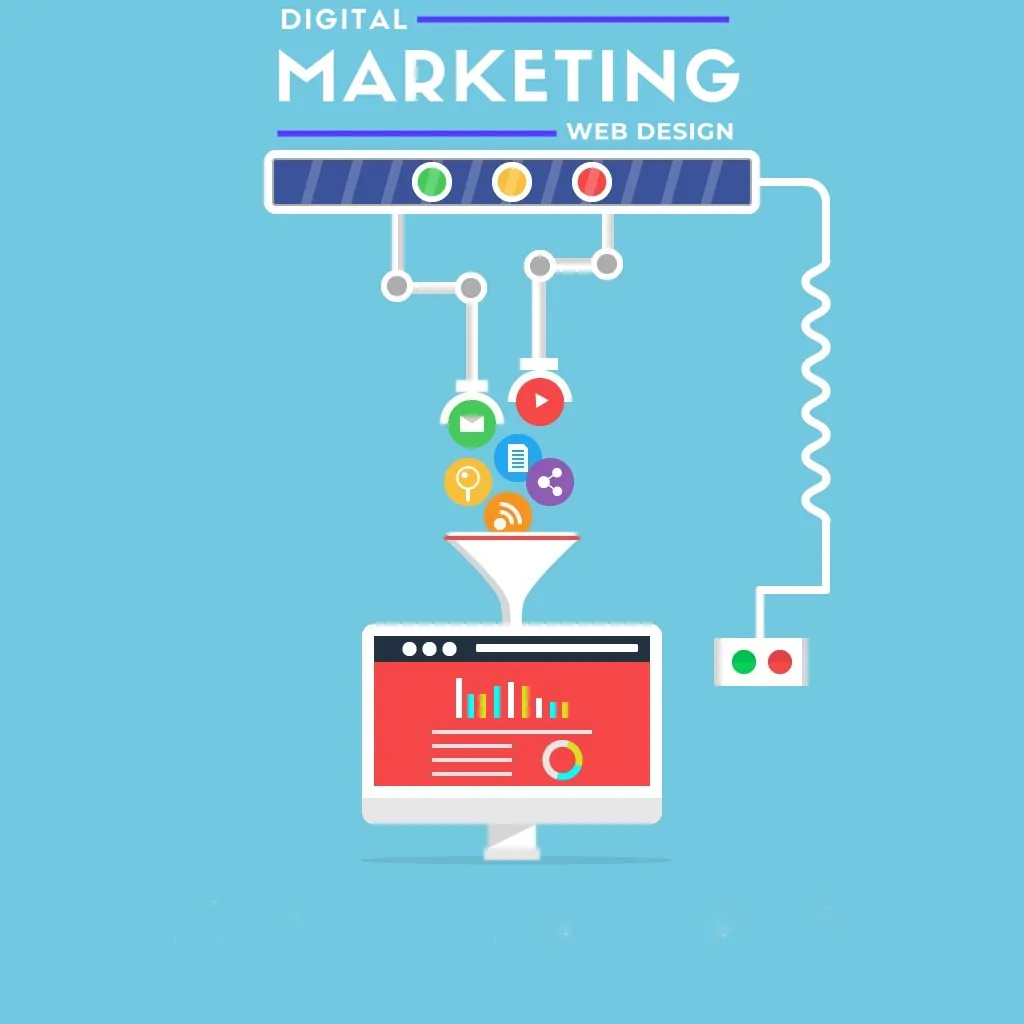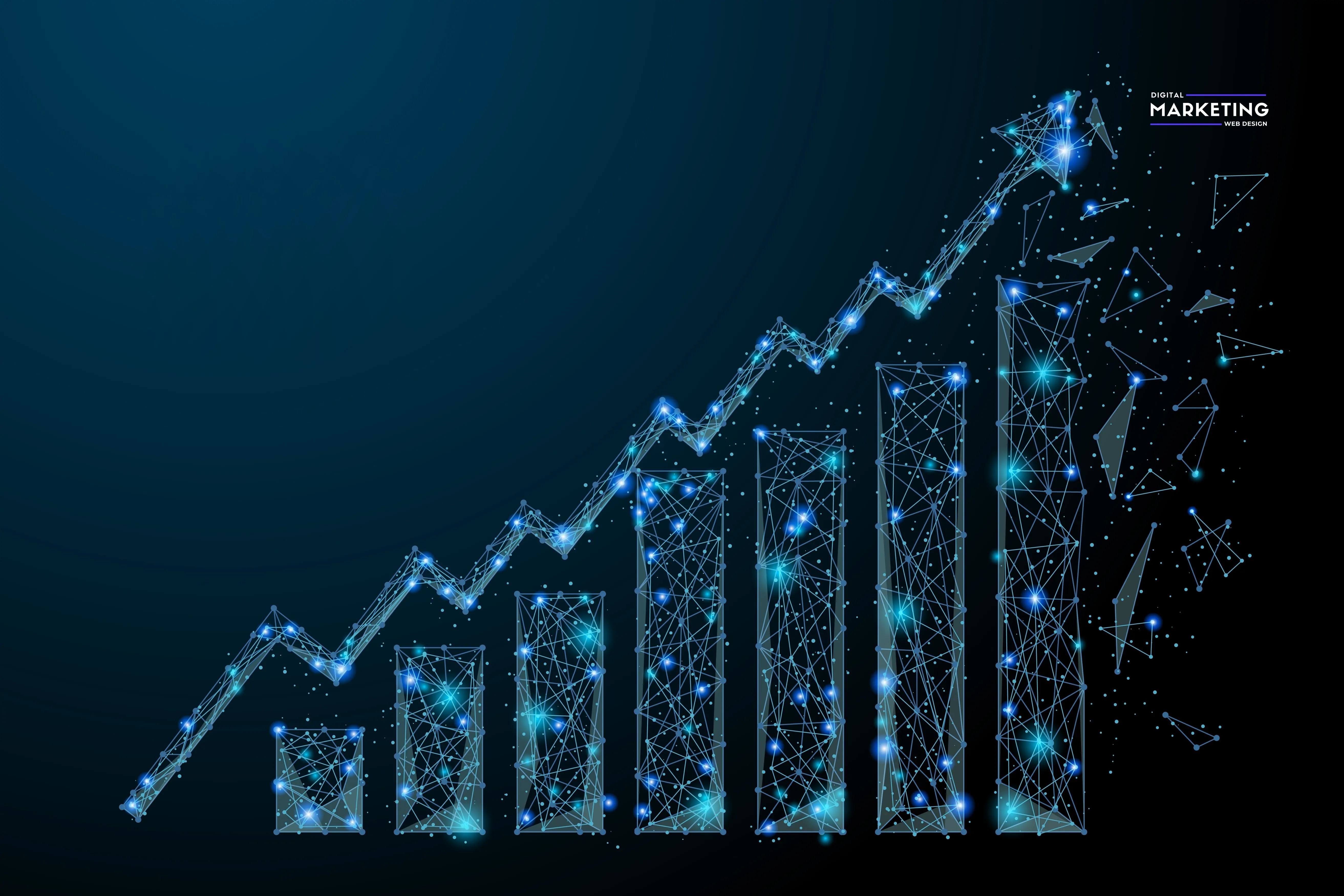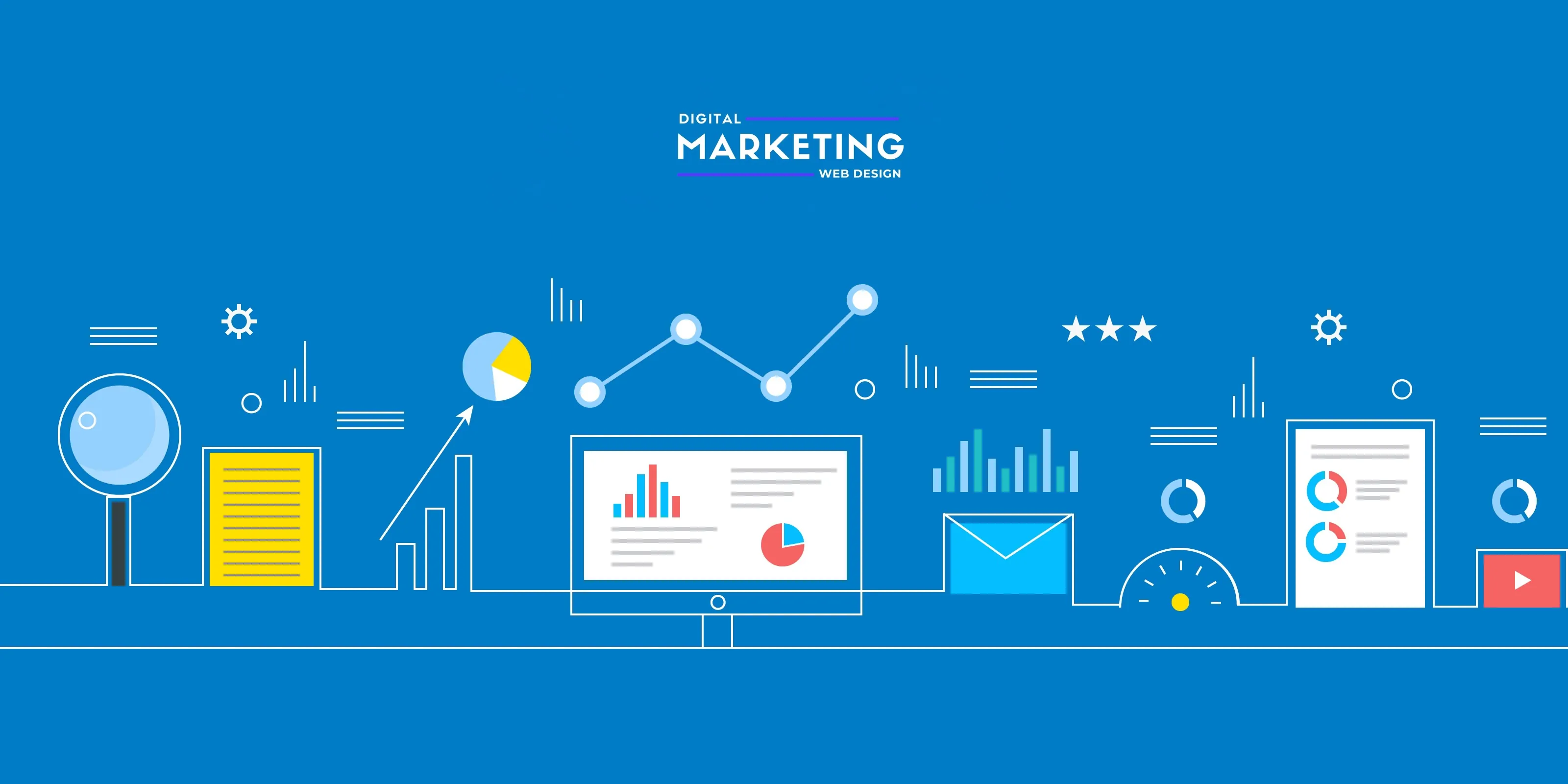Technology has shaped the way we do business. Many of our business processes have become simpler and easily-manageable, with the help of technology. While the way we do business has indeed become easier, the market has also grown so competitive that results aren’t as easy to come by as in the past. To put it more simply, starting a small business today has never been easier. Growing that small business, however, is a whole entire conversation.
Table of Contents
The Five Biggest Marketing Challenges for Small Businesses
Lack of Resources
Among the numerous small businesses that fail annually, about 50% report a lack of resources and working capital as the main reason for failure. Typically, savvy business owners are already aware of the costs of doing business and how much money is required to maintain business operations on a day-to-day basis. This would entail knowledge of fixed and variable overhead costs like rent and utilities as well as payment for external vendors.
But not all businesses are capable of sustaining their operations, especially when owners are less in tune with the business, its operations, and the amount of revenue generated by the sale of its products and/or services. Ultimately, this results in cash flow problems. Business Insider reports that 82% of small businesses fail simply because they have problems with cash flow. This results in poor decisions such as competitive product pricing and ineffective marketing practices in an effort to rid the business of its cash flow woes.
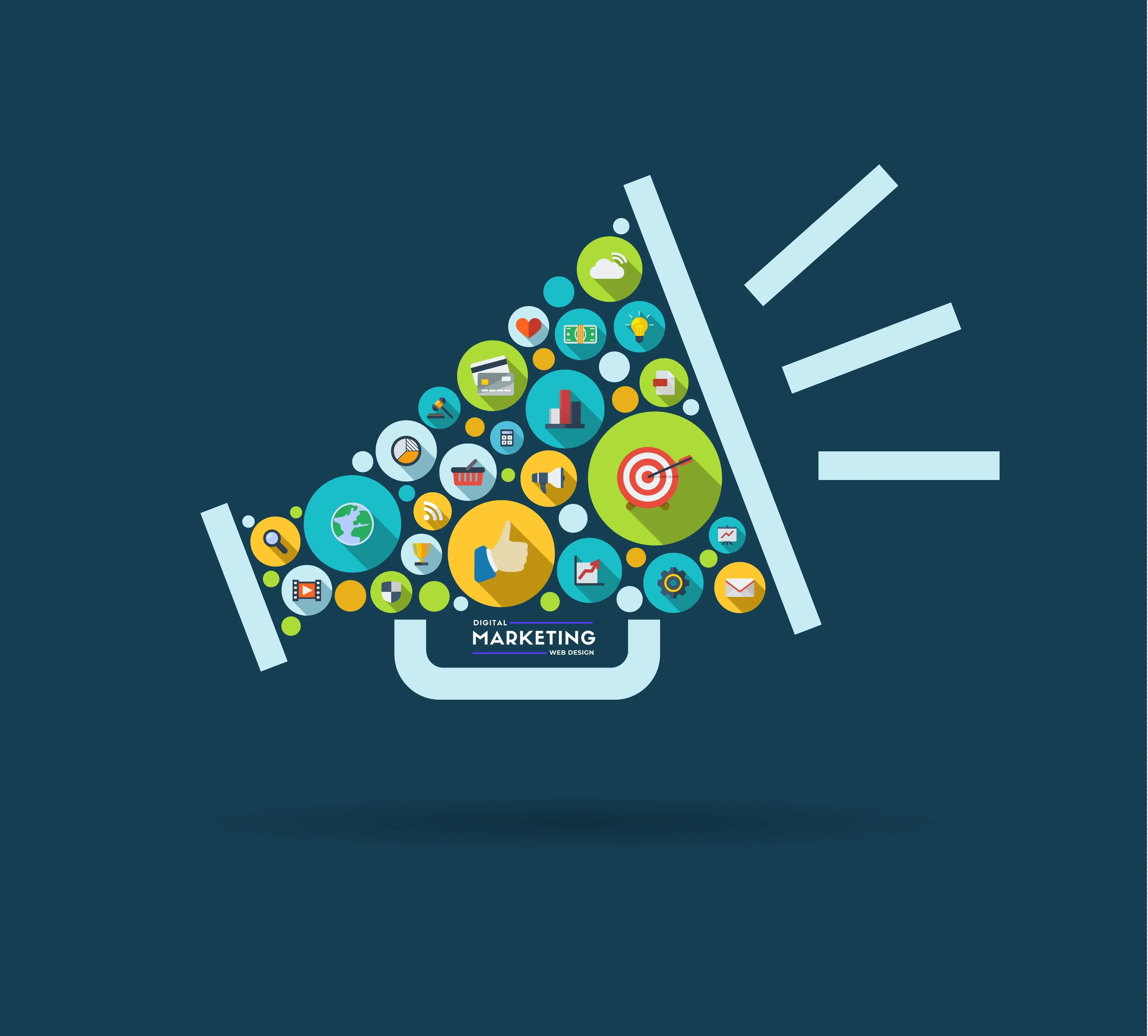
Increasing Visibility
Data gained from the Small Business Administration (SBA) provides insight into the survival rate of small businesses during their early years. It states that nearly 66% of small businesses do survive during the first two years. This means only about 34% actually fail during the first two crucial years. But according to the Bureau of Labor Statistics’ Business Employment Dynamics, only 50% of businesses will survive their fifth year, with only 30% surviving their tenth year.
The data provided all points to a monumental problem faced by all small businesses, which is the need to be visible. And for small businesses, this is a drastic need in order to improve sales and thrive. In order to gain visibility, businesses have to spend more money – something that is difficult to accomplish when operating on a shoestring budget.
Generating Quality Leads
Lead generation is the lifeline of any business. It is also quite simple to create and execute effectively – in theory. However, only 10% of small businesses can honestly say that their lead generation efforts are highly-efficient and effective. 61% blame the lack of funding and a dedicated sales team.
What most small businesses fail to account for is that the market is constantly evolving. Consequently, they fail to adapt and end up using outdated lead generation tactics for the current state of the market.
Choosing & Navigating the Right Social Media Platform
Social media statistics gathered from Emarsys suggest that there are already 3.2 billion people using social media around the world, roughly 42% of the entire world population and is still growing. To take advantage of that fact, SMBs venture into social media hoping to reach a good percentage of those users. However, a fairly recent survey by Manta revealed that among small businesses, 59% reported that they had no return on their investment.
Despite the massive failure in their social media efforts, nearly 92% of small businesses still planned to increase their investment in social media in 2018. This could lead to massive losses due to poor social media marketing planning.
Producing & Delivering High-Quality Content
High-quality content is not considered the currency of social media. Quality, engaging content allows businesses to capture and keep an audience’s attention by offering something of value to the reader. But producing content is just the easy part. Creating content that converts is the more challenging part.
Quality content requires time and skill. And as the one who truly understands the nature of the business, most business owners prefer to take care of their content marketing needs on their own. But as most business owners also know, producing quality content on a consistent basis eats up too much time – time that could have been spent actually running the business. This creates a big dilemma for business owners, whether they invest their own time to create content, or invest actual money and pay for someone else to do it.
Meanwhile, the competition continues to grow fierce as each business struggles to earn the attention of the audience, creating a pseudo arms race – the battle of who can provide the best content more frequently.
Strategic Planning for Better Results
Most challenges faced by small businesses are tactical in nature, which only requires a sound strategic plan to solve. In fact, a solid strategic marketing plan allows business owners to guide their efforts based on different resource constraints such as time and budget and align their strategies with their goal.
Without a good strategic plan, many opportunities will be missed due to several reasons like the business isn’t ready, not enough cash flow, or the lack of skill. In other times, without a clear strategic plan, each member of the team such as a web developer, marketer, or programmer will have their own vision and work towards achieving their own goals. Either way, the business suffers.
Originally, a strategic plan was thought of as a lengthy, planned document containing the business’s plans over an extended period of time. It serves to map out the goals of the business, outlining the company’s mission statement, vision, and objectives. It contains necessary plans to support the business and its reason for existence.
What most businesses fail to accomplish, however, is to supplement any strategic or marketing plan with realistic data that can inform each decision or strategy. This is known as data-driven digital marketing. Without any basis, any marketing strategy is doomed to fail even before its implementation.
The biggest challenges faced by small businesses can be solved by utilizing big data gathered from digital marketing efforts. Supplementing a strategic plan with big data enables the business to make better-informed decisions and deliver data-driven results.
Benefits of Data-Driven Digital Marketing
Marketing Personalization
The key to modern marketing is personalization. What used to be a one-sided affair has transformed into a conversation wherein communication occurs both ways. The consumers of today no longer fall prey to marketing tactics of yesterday. Today, consumers want to be engaged before any purchase can take place.
However, it is also true that today’s consumers are savvier. They are already well aware of the different tricks used by marketers to gain engagement. That is why personalization has never been more important.
Marketers must now deliver content designed to create a more personal relationship with the consumer based on value. Digital marketing data analytics promises to deliver insights into the customer persona that informs marketing strategies and create a more personalized approach to customer engagement. A study conducted by McKinsey revealed that personalization founded on big data improved marketing ROI on marketing spend by up to 20%.
Better Audience Insight
Big data enables businesses to trace a consumer’s digital footprint to gain valuable information about every interaction on the web, whether it’s the amount of time spent on a specific page or clicking on a specific offer. This data will provide the necessary behavioral information needed to craft the best action plan for communication.
Using the information gained, the business can now target users within their online communities to further improve previous data gathered to better understand the audience and identify patterns in their behavior that can be used for predictive analysis. This will also help to recognize what their motivations are to create better strategies.
Audience Segmentation
The act of segmenting audiences is not an entirely new concept. In fact, the idea has been around and used by businesses all over the world for decades now. It was usually performed without distinguishing between customers that are profitable and those that are not, which cost businesses millions of dollars in advertising costs with little ROI. It also focused on a retrospective look at customer behavior and preferences, producing unreliable results.
With big data, client segmentation is much more structured, more reliable, and promises greater returns. With multiple sources of digital marketing data now available, a customer’s intention is now more easily gauged. This greater reliance on real-time data allows businesses to gain positive, more reliable results
Identification of Proper Marketing Channels
The customers of today are almost always connected, whether it’s to the internet or on social media. Using their smartphones, greater access to an entirely new world of choices and noise is available at their fingertips. Without any idea of where and how to find them, a business might end up failing right from the start.
Through big data, businesses now have access to a wide plethora of information on the client that allows them to properly target the consumer based on their behavior. Thanks to big data, businesses now have access to real-time data to make informed decisions and predict customer wants as well as where they will be. Large data sets can be analyzed to identify where customers spend most of their time or where they are more than likely to convert.
Consumer Pre-Targeting
While a large chunk of online marketing and targeting techniques are built on already established data for retargeting, a greater ROI can be gained when pre-targeting future clients. Pre-targeting is an online technique used in marketing to target prospective clients using a profile of the ideal customer.
Pre-targeting is different from retargeting, which requires prospective clients to have a prior relationship with the business to use. Rather, pre-targeting uses previous data to build a similar persona of the ideal customer and use that persona to target clients that have not interacted with the business yet.
Customers with no prior interactions with the business can now be targeted thanks to big data. This can be used to predict consumer behavior prior to any interactions they may have with the brand and come up with strategies to help them convert.
Improved Product Development
The success of the product or service primarily depends on how well they are received by the target audience, which also depends on how well their needs are met. A product or service that can provide value and meet their needs will more than likely be well-received. This only comes when they have been designed with the customer in mind.
Big data provides more insight into the wants, needs, and preferences of the customer. As more information about the customer becomes available, a clearer picture begins to form about the product and for whom the product is designed. Product development can then focus on providing value and addressing customer pain points to better cater to their needs as the end user.
Customer Experience Optimization
As newer technologies are introduced into the market, the market and its preferences will continue to evolve. And the more the needs of the customers are met, the more their expectations go up. But as long as the market is driven by the customers, their needs will always have to come first, and their expectations will always have to be met.
To thrive in this customer-centric market, businesses must continually seek opportunities to understand customer experiences and get in front of them each time. To effectively do this, businesses must look to big data in digital marketing to guide their customer experience optimization efforts. This allows the business to effectively manage customer expectations and provides positive outcomes in response to those expectations.
Better Scaling of Marketing Campaigns
Customers on different marketing channels respond differently. One marketing campaign for a specific channel may not work on another platform. For this reason, marketing campaigns cannot be simply copied on another platform expecting the same outcome.
Instead of simply copying a marketing campaign, data analytics in digital marketing allows the recognition of established trends to influence the current campaign for a different channel. Through data science, it now becomes possible to measure the optimal duration an ad can be displayed for maximum conversion, or the optimal ad image or copy to use in ads. This, in turn, can lead to newer data that can be used to inform future campaigns.
Lower Overall Costs
Data-driven marketing provides detailed insight into what works and what doesn’t in digital marketing. This is especially true because it provides great information about the audience and their behavior and preferences. Without access to this data, marketing campaigns are left without a definite path or a clear direction.
Detailed insight into the behavior of consumers as well as their engagement and responses to the campaigns can greatly inform the decisions made during each campaign. Essentially, big data provides a basis for each decision to be made, eliminating the cracks and leaving only sound judgment based on big data analytics. This leads to lower costs and greater peace of mind for small business owners.
Big Data Brings Big Business
More and more enterprises are embracing the power of digital marketing analytics and big data to transform their businesses. Using advanced software systems, businesses can reduce the amount of time it takes to analyze data, use them to make speedy, informed decisions, and bring in big business.
With the increasing reliance on digital media through the internet and social media, many businesses have now invested heavily on big data analytics. Large enterprises have taken advantage of digital marketing analytics and capitalized on the many benefits they bring to transform the way they do business. Here are some examples:
Coca-Cola
Coca-Cola is the biggest beverage company in the world with over 1.9 products sold under 500 soft drink brands in more than 200 countries around the world every single day. One of the main reasons why they continue to be on top, despite being 130 years in the business, is their ability to embrace innovation, which includes big data.
Any operation as large as Coca-Cola is sure to generate tons of data from different facets of its operation. But how this data is utilized will ultimately dictate the success of any data-driven strategy. For Coca-Cola, its solid data-driven strategy controls every decision made across the business. They are known for their extensive investments into artificial intelligence and data analytics software to better make sense of the data they collect.
With over 105 million Facebook fans and 35 million Twitter followers, Coca-Cola currently sits on a virtual gold mine of data, which it continues to exploit. The company tracks how their products are represented across all social media platforms, taking note of mentions, posts, images, or videos of their products. They also kept track of product images posted online using image recognition software powered by AI technology. This led to the conclusion that products were mentioned, on average, every two seconds around the world in 2015.
Through the large amounts of data collected by Coca-Cola, they were able to gain valuable insight into how customers are responding to the brand and the factors that prompt them to respond while carefully taking note of the location. This information is then used to deliver targeted ads that are four times more likely to result in a click.
Coca-Cola also uses big data to dictate product development. One perfect example is their unveiling of Cherry Sprite in 2017. Cherry Sprite was a product of data collected from self-service drink fountains from an earlier campaign. In the campaign, customers were allowed to select flavor shots to add to their drinks. One of the most popular flavors chosen was cherry, which was later transformed into a drink for a more massive audience.
Netflix
Netflix first began as a video rental service but has transformed into the biggest on-demand video streaming service today with over 100 million subscribers. Netflix is one of the best examples of how big data can revolutionize an industry and leverage it to build success.
While on any streaming platform that offers tons of content, viewers typically lose interest altogether after 60 to 90 seconds of choosing something to watch. This happens a lot, especially when the choice of watching material is vast. Users ultimately give up and exit the platform altogether after browsing its selection with no hope of finding something of interest to them.
Netflix solves this streaming conundrum by introducing a recommendation system based on its native algorithm. This system works by gathering and putting together data collected from all over the platform, which begins with Netflix asking a series of questions about the user’s interests. A list of recommended content is then shown to users based on the data received. Data collection then begins once the user views content on the platform.
With the help of big data, Netflix is able to analyze the viewing habits of their subscribers to help them decide what to watch next based on what they’ve seen. 80% of the content shown to subscribers are based on this recommendation system, which makes the viewing experience even more personal. The algorithm used by Netflix enables them to save over $1 billion a year in value from customer retention.
Amazon
When faced with a massive selection of potential choices, users end up feeling overwhelmed, and ultimately decide to forgo the process. This is often the case for companies engaging in e-commerce. But none feel the brunt of this psychological phenomenon more than Amazon. With its “everything under one roof” model, potential customers often become too undecided while visiting the platform, which makes it even harder to gather insight on their buying behavior simply because no purchase was made.
To stop this from happening, Amazon decided to gather data not just on purchase behavior but on other parts of the sales experience, as well. The e-commerce giant utilizes a collaborative filtering engine that analyzes a customer’s buying habits based on their previous purchases, items inside their cart, wish list, and products viewed, reviewed, or searched for the most.
Amazon also gathers data from other places such as whether or not the buyer leaves reviews or feedback and the buyer’s shipping address (to estimate income level based on the neighborhood). All of this data gathered is used to build a 360-degree view of the customer. This customer persona is then used to create a list of recommended products based on buyer behavior. Not only that, but Amazon also offers products based on the behavior of others with similar profiles or personas.
Through big data, Amazon is able to analyze buyer behavior and create an individual persona they can use for marketing as well as predict the customer’s preferences based on their perceived traits. The buyer, ultimately, is influenced to make a purchase by limiting the number of purchase decisions they have to make.
Shell
The oil and gas industries are in the midst of a crisis. The costs for exploration and resource extraction continues to increase amidst dwindling fuel supplies and turbulent politics that add to the difficulty in exploration and drilling for new reserves. The cost for manpower, materials, and logistics during drilling operations could amount to $100 million, which drastically raises the need for lucrative digging spots. For this reason, key players in the petroleum industry are turning to big data to solve these mounting challenges.
The Shell UK Company, for instance, is leveraging advanced data analytics to predict areas that can provide the biggest returns. They predict the size of oil and gas deposits through the collection of data from the ground by monitoring low-frequency seismic waves found beneath the earth’s surface.
Data obtained from site forecasting operations are uploaded to analytics systems and compared with data from other sites. Results that register similar responses to rich extraction sites improves the probability that extraction operations will pay off.
But nothing can be more costly than machine breakdown. It adds to operational downtimes as well as increasing opportunity costs. To get rid of maintenance issues, Shell built an analytics platform that can be used for predictive analysis on its machinery and anticipate failure. The platform runs predictive models to anticipate the breakdown of any mechanical parts that might cause downtime. Today, Shell’s inventory analysis takes less than 45 minutes, saving millions of dollars in possible maintenance and operational costs.
But on an operational standpoint, Shell uses big data to streamline the production, refinement, and transportation of goods. Because refineries only have limited capacities, it makes use of big data to time the production process perfectly to limit the time between production and storage. This improves the efficiency of the production and transportation process while ensuring costs are low. And in this period where the price of gas is at an all-time high, the efforts of Shell to optimize their operations to keep fuel prices low for consumers is certainly a welcome thought.
Wal-Mart
Sometimes, a natural disaster can transform into a big business opportunity. This is exactly what happened to Wal-Mart back in 2004, thanks to big data. As Hurricane Frances hit the US in 2004, the retail giant gained valuable insight into the buying habits of people when faced with a natural phenomenon of this degree.
Before the storm hit, Wal-Mart used predictive analysis to view the buying habits of people when faced with a storm using data from past hurricanes. It learned that aside from emergency equipment and flashlights, people also stocked up on beer and strawberry Pop Tart sales improved seven-fold. It now uses data gained from their analysis to forecast demand, especially in the event of a storm.
Wal-Mart’s efforts paid off. When the hurricane hit, it stocked up on beer and many ready-to-eat foods, including Pop Tarts, by the truckload. The products sold extremely well, earning Wal-Mart millions in sales within a single season.
Data-Driven Results
Here at Digital Marketing Web Design, everything we do is founded on data that is proven and tested in the field. With our extensive experience in helping SMBs grow, we have collected tons of data on the best marketing techniques. By compounding the data we have with real-time data we collect, we can come up with a sound marketing strategy that matches your goals and drive more business while keeping costs low.
Goal: Significantly bring down cost per lead.
Our Strategy
We employ many different strategies to achieve this goal, but first, we talk to our clients about the nature of the business to identify their clientele and see who they want to target. Discussions about past and current marketing strategies are welcome to give us more data about the actions that we can take.
We collect pixel data obtained from Facebook, Google, or Pinterest pixels to set up a retargeting system designed to
guide customers along the funnel until they ultimately convert. Those lost in the funnel will be recaptured and guided back to the funnel. We do this by testing the demographic and separating them based on interest, optimizing for either mobile or desktop audiences. We set up a criteria against which a particular ad set can be judged. Ad sets that perform below the criteria set are turned off.
Once we’ve gathered enough data from the pixels, we set up a custom audience to tell Facebook who to target. Custom audiences are personas that contain the qualities of the target audience based on demographics, interests, or behavior while interacting with the brand. Ad sets containing the optimal offer are then created for each custom audience to identify the optimum demographic for each ad. Ad sets that don’t perform well are killed to give way to those that do convert.
Now, we set up a lookalike audience using the data gathered from our custom audience. For instance, we can create a lookalike audience from Facebook mobile that added items to their cart. Using demographic data obtained from the custom audience, Facebook now creates a set of people that have similar qualities but has no prior interaction with the brand. We then target those people to further improve our reach.
The Results
The entire process of refining the search for better targeting and retargeting brings down the total cost per lead by as much as 88%. An ad set with an original CPL of $3.13 can be brought down to as low as $0.38 CPL.*
Goal: Optimize the funnel to maximize conversions and boost sales.
Our Strategy
First, we define the type of funnel you want your customers to go through. As defined by Google Analytics, there are two types of funnels, namely a sales funnel and a goal funnel, with both having multi-channel variants. Goal funnels are used mainly for non-transactional goals such as newsletter signups or to join a webinar. Sales funnels, on the other hand, are transactional in nature, with sales as the end goal.
For this discussion, we use a sales funnel as an example. We begin by dividing the funnel into three major stages, which is the lead generation stage, the conversion stage, and the nurture stage.
During the lead generation stage, we focus on traffic generation and customer acquisition. We take into account all the digital marketing activities we use to enable us to attract leads and guide them along the funnel.
We gather data from the different marketing activities to optimize the strategies in lead generation to come up with the best possible strategy. This is a continuous process to ensure that every strategy we use are up-to-date and uses current data. For instance, we constantly research the most searched keywords to inform your content marketing strategy and improve your search engine rankings. We also make use of digital marketing analytics to come up with the best social media marketing strategy and generate tons of traffic.
The next stage of the funnel is the conversion stage. Here, we focus on converting the traffic that we generate. Using big data analytics, we identify the best solution to optimize conversions. We gather data on the best possible offers that will allow the client to convert. We test all the materials used in the conversion process, such as the landing page, conversion forms, the website, and including emails.
After conversion, the leads are guided further along the funnel to reach the nurture stage. This is a crucial step because once a sale is complete, the customer stops being a customer. Additionally, the cost of acquiring a customer is five times more expensive than just keeping one. Therefore, those leads have to be nurtured to keep costs low and conversions high.
Once in the nurture stage, customers are retargeted and reintroduced into the funnel using a personalized email marketing strategy. Using digital marketing data analytics, a strong, personalized email marketing strategy can be created to deliver personalized content to the customer based on previous purchases.
The Results
Optimizing the funnel can yield amazing results. First, we identified that organic SEO strategies are 5.66 times better than paid search ads due to the sheer amount of traffic generated while keeping costs to a minimum, generating 10x better ROI.*
Using a targeting and retargeting strategy, we were able to bring down cost per acquisition by as much as 57% and conversion rates of up to 12% – 6% more than the industry average.*
Employing a robust customer retention strategy, we increase profits by as much as 95% just by increasing retention by 5%. This is due to lower costs in marketing and persuasion as new customers will require a significant amount of persuading before making a purchase. In contrast, up-selling to a returning customer is 70% easier than a new customer. Marketing costs also go down for new customers as returning customers will always recommend their favorite stores to friends and family 84% of the time.*
Goal: Build an email marketing campaign that is optimized for conversion.
Our Strategy
In order to build a strong foundation for any email marketing campaign, you have to begin with a strong lead generation campaign that is able to capture customer information to build an extensive email list. To do this, we begin with a landing page that is optimized for conversions.
The landing page will serve as the “airport terminal” that receives all “flights” coming in. Each part of the landing page will be optimized to make sure it can capture the information of visitors. A good way of accomplishing this is by split testing each part, including the headline, copy, offer, call to action and even the landing page image. For each landing page, we gather and analyze the data we obtain to further optimize the page.
We now optimize each email that we send to ensure that for each email, our audience is ready to opt in and convert. We begin by optimizing the email subject. The subject is the most important element for an email because it is the first thing that the recipient sees. It also tells the recipient what the email is all about without having to open the email itself. Based on data obtained through the landing page, we employ personalization tactics to ensure the subject line is optimized for click-through.
The copy of the email will also be split-tested, testing both the copy and the offer to identify the optimal combo that converts. Those that don’t convert are reintroduced to the funnel and retargeted using the data previously obtained. Follow-up emails will be sent to them to improve the likelihood of conversion.
The Results
The average landing page conversion rate across all industries lies roughly around 5%. Using our strategy, we have consistently created landing pages that convert at a rate of 13% or better. This means we can consistently generate leads at a 61.5% better rate than others.*
Additionally, on average, welcome emails are open 82% of the time. That number goes down to an average of 29.4% across all industries for every other email sent. That is why we optimize the subject line of every email we send out, especially for mobile as emails are three times more likely to be opened on a smartphone than on a computer.*
Through personalization using pixel data and landing page optimization, we can increase the likelihood of an email being opened by 50%. However, we also found out that we shouldn’t be too personal since subject lines without a pronoun increase open rate further by as much as 52%.*
By employing our email marketing strategy, you can expect returns of $43 for every $1 spent, a figure that can still go up the more we optimize our strategy as more data is gathered.*
Conclusion
Using the same methods listed above, we have helped businesses achieve results that were previously thought unreachable. We have helped streamline their business processes to become more efficient in post sales activities. By using data-driven methods, we have also helped create better marketing strategies for specific businesses, that saw them double their business within a year of working with us. And as we continued to work together, we have helped them achieve a steady growth of 20% every year. This clearly illustrates the power of data-driven results.
Strategies for marketing and building growth for any business have a strong likelihood of success when they are built using data and digital marketing data science. Using analytics to drive your business has the power to transform a good strategy into the best you’ve ever seen. Data analytics has the power to identify prevailing trends in the market that can significantly alter the course of business. Using data to drive results will give you a big advantage over your competitors that rely on old strategies and outdated techniques for their business.
*Past results are not indicative of future performance. Results are not guaranteed. Every business is different and requires a tailored strategy for success and real results.




